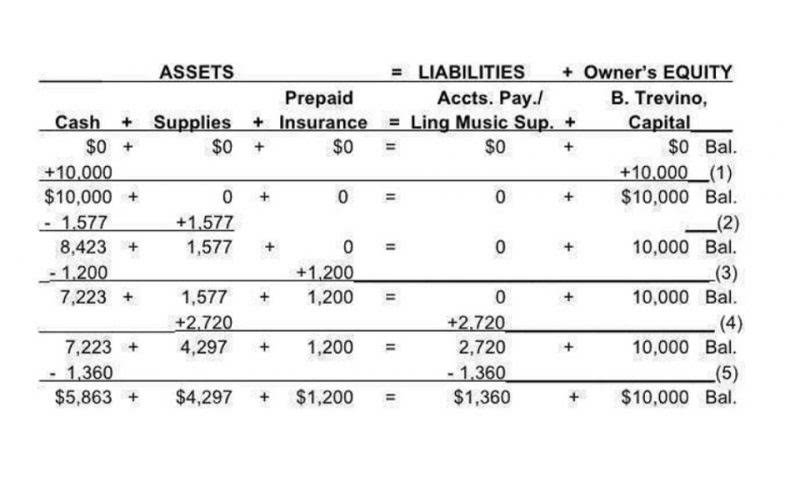A business owner should ignore salvage value when the business itself has a short life expectancy, the asset will last less than one year, or it will have an expected salvage value of zero. If a business estimates that an asset’s salvage value will be minimal at the end of its life, it can depreciate the asset to $0 with no salvage value. Depreciation measures an asset’s gradual loss of value over its useful life, measuring how much of the asset’s initial value has eroded over time. To appropriately depreciate these assets, the company would depreciate the net of the cost and salvage value over the useful life of Online Accounting the assets. If the assets have a useful life of seven years, the company would depreciate the assets by $30,000 each year.
Using Salvage Value to Determine Depreciation
- In regression analysis, the difference between the observed value of the dependent variable and the predicted value is called the residual.
- For example, consider the value of land owned by a company that only slightly went up in value by the end of its useful life.
- These elements influence operating cash flows, which are critical for understanding a company’s liquidity and operational efficiency.
- Manufacturing and EquipmentIn manufacturing, machinery often has a significant salvage value, impacting budgeting and investment decisions.
- A higher salvage value can enhance the NPV, making an investment more attractive.
When salvage value changes, it may cause a change in the amount of depreciation expense you can deduct. If there is a decrease in the salvage value, depreciation expense will increase and vice versa. Depending on how the asset’s salvage value is changing, you may want to switch depreciation accounting methods and report it to the IRS. The residual value of a car is the estimated value of the car at the end of the lease. The residual value of a car is calculated by the bank or financial institution; it is typically calculated as a percentage of the manufacturer’s suggested retail price (MSRP).

Units of Production
Therefore, the salvage value is simply the financial proceeds a company may expect to receive for an asset when it’s disposed of, though it may not factor in selling or disposal costs. On the income statement, the depreciation expense, influenced by the salvage value, affects the net income. A lower salvage value results in a higher depreciation expense, reducing taxable income and potentially leading to tax savings. This interplay can have strategic implications for financial planning, as companies might adjust their depreciation strategies to optimize tax liabilities and financial performance metrics. Companies may use software tools like Sage Fixed Assets or Asset Panda to aid in calculating salvage value. These programs help track asset depreciation and estimate salvage values based on historical data and market trends, reducing the likelihood of human error.
Understanding Residual Value

After ten years, no one knows what a piece of equipment or machinery would cost. Salvage value or Scrap Value is the estimated value of an asset after its useful life is over and, therefore, cannot be used for its original purpose. For example, if the machinery of a company has a life of 5 years and at the end of 5 years, its value is only $5000, then $5000 is the salvage value. Companies can also use industry data or compare with similar existing assets to estimate salvage value.
- If you lease a car for three years, its residual value is how much it is worth after three years.
- As the salvage value is extremely minimal, the organizations may depreciate their assets to $0.
- This method assumes that the salvage value is a percentage of the asset’s original cost.
- By submitting this form, you consent to receive email from Wall Street Prep and agree to our terms of use and privacy policy.
- The salvage or the scrap value is estimated when the useful life of an asset is over and can’t be used for its original purpose.
- It just needs to prospectively change the estimated amount to book to depreciate each month.
Comparing Salvage Value to Other Values

For the past 52 years, Harold Averkamp (CPA, MBA) has worked as an accounting supervisor, manager, consultant, university instructor, and innovator in teaching accounting online. In regression analysis, the https://www.bookstime.com/ difference between the observed value of the dependent variable and the predicted value is called the residual. Charlene Rhinehart is a CPA , CFE, chair of an Illinois CPA Society committee, and has a degree in accounting and finance from DePaul University. The salvage calculator reduces the loss and assists in making a decision before all the useful life of the assist has been passed.
- Resale value is a similar concept, but it refers to a car that has been purchased, rather than leased.
- It is the value a company expects in return for selling or sharing the asset at the end of its life.
- This figure is essential for calculating depreciation and making informed investment decisions, impacting both short-term budgeting and long-term strategic planning.
- The company pays $250,000 for eight commuter vans it will use to deliver goods across town.
Salvage Value Depreciation Equation
- Salvage value can be considered the price a company could get for something when it’s all used up.
- In this situation, the salvage values calculated are less than the book value.
- Companies take into consideration the matching principle when making assumptions for asset depreciation and salvage value.
- So, total depreciation of $45,000 spread across 15 years of useful life gives annual depreciation of $3,000 per year.
- An asset’s value can be affected by changes in market demand or the introduction of newer technologies.
On the other hand, salvage value is an appraised estimate used to factor how much depreciation to calculate. To calculate the annual depreciation expense, the depreciable cost (i.e. the asset’s purchase price minus the residual value assumption) is divided by the useful life assumption. Some methods make the item lose more value at the start (accelerated methods), like declining balance, double-declining balance, and sum-of-the-years-digits. The depreciable amount is like the total loss of value after all the loss has been recorded. The carrying value is what the item is worth on the books as it’s losing value. Companies determine the estimated after tax salvage value for anything valuable they plan to write off as salvage value losing value (depreciation) over time.
